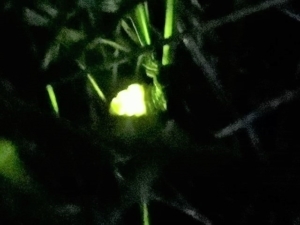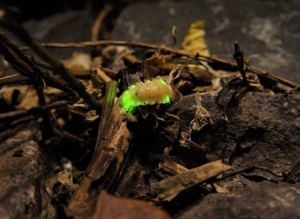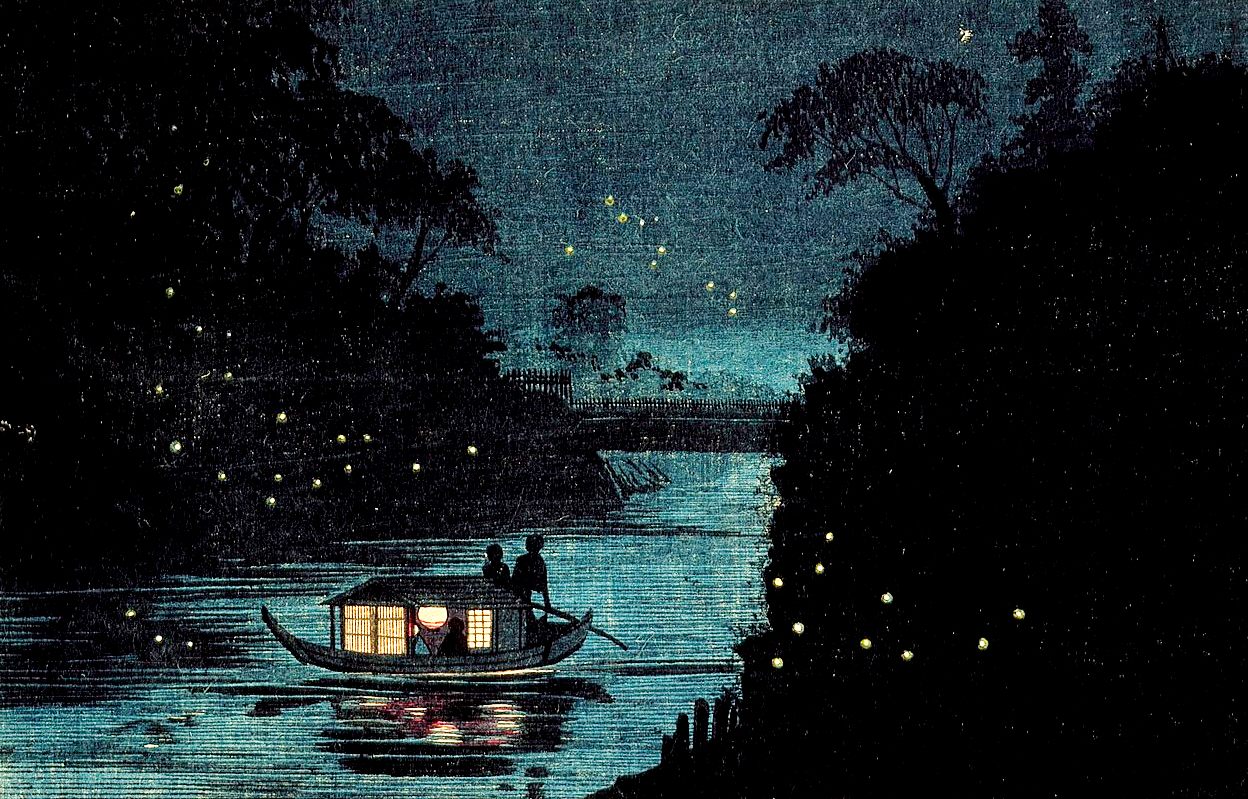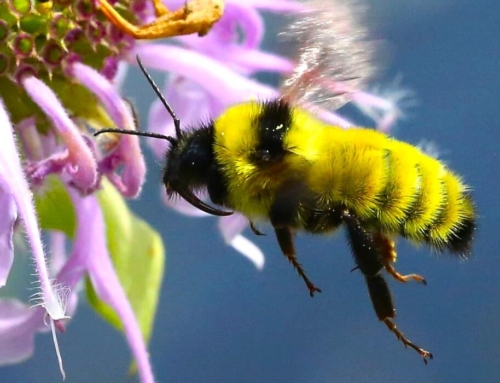What a strange and beautiful insect the firefly is. Just about everyone has seen these little creatures in some field dancing about the twilight air on a humid summer evening – and just about everyone thinks they are something they’re not.
But before we get into that, we can probably all agree that they are one of the most fascinating works of nature – an insect that glows! If a bug could actually be called beautiful, this one would qualify.
Not Fire or Fly
As to the “fire” part of their name, it’s not actually fire, at least not a hot or combustible type of fire. Nor is it electricity. It’s a chemical reaction within their bodies, produced by an organ in their abdomens. It’s more like a type of light-emitting “cold fire” such as you’d see in the numbers on a digital alarm clock. It’s basic  organic material that has a very narrow range of light emissions. (It doesn’t even come close to the infrared or ultraviolet ranges of the light spectrum.)
organic material that has a very narrow range of light emissions. (It doesn’t even come close to the infrared or ultraviolet ranges of the light spectrum.)
So, don’t worry, if you ever catch one of those little guys in your hand, you won’t be burned. “Fire” is just a metaphorical name that gives a glowing and colorful identity to an otherwise dark little bug. Other highly descriptive names for them are “lightning bugs” or “glowworms”. In fact, the German name for the insect is Glühwürmchen! That’s a double umlaut – quite an expressive name, fitting its expressive little owner.
And as the title noted, the firefly is not actually a fly either. It is a beetle! Beetles are distinguished mostly by the hard carapace on their backs, which opens for their wings when they fly. Even then, not all fireflies have wings, particularly some females, further confirming that this type of insect is not a fly.
So, this mysterious little bug is neither fire nor fly, but it is quite the showman, and for that we are grateful.
The Lightshow
The fascinating part of their “personalities” is the incredible style with which the fireflies emit their light. There are over 2000 separate species of fireflies, so their lightshows are probably as unique as would be any gathering of 2000 human beings acting their parts on stage. And it does seem that they are putting on a show for us whenever they come out in force at night.
Fireflies have certain techniques they employ to create their animated light shows; the following are their four primary acts:
- Flashing – Would it surprise you that the simple work of on-and-off flashing is the most common mating technique among fireflies? (Females of some species do not emit light but attract mates with pheromones.) In one documentary on fireflies, a man described the excessive show of male strutting as an episode of Jersey Shore…but in the woods!
- Steady glow – This is sometimes understood as a warning to potential predators that the larvae of the firefly (which usually emit the steady glow of light) are highly distasteful. Nature’s “messaging” is amazing, isn’t it?
- Flash signaling – These are the variations of simple flashing, which can combine with other factors to identify a particular species: the color of the light (green, yellow, even blue hues), flash patterns, the duration of the flashes, their combination with flight (diving, rising, swooping), and their coordination with pheromones, which varies from species to species.
- Synchronization – Perhaps the most amazing show is when swarms of fireflies all flash in sync to create a truly mesmerizing pulsating light effect in the evening sky. It’s a perfect example of the principle of entropy, that is, the harmonization of natural rhythms of things which occurs spontaneously in nature when not interrupted by other forces.
Killer Females
By far, my favorite signaling technique of the firefly involves what are sometimes termed the “femme fatale” fireflies. These ladies mimic the signals of smaller (more attractive?) female fireflies, and when the male falls for the ruse – the femme fatale eats him!
 A radical feminist version of the firefly, maybe, or a close cousin to the spider? (I’m still researching that question.)
A radical feminist version of the firefly, maybe, or a close cousin to the spider? (I’m still researching that question.)
I’ll bet you never knew these simple bugs could be so sophisticated. I certainly never did. One of the videos below calls the firefly dance “a complex language of life.”
We’re dealing here with utterly unique forms of communication in the insect world that remind us once again that a divine Intelligence created each detail of this marvelously complex world, each with its own distinct purpose and nature.
In Our Backyards
The natural habitat of a firefly is darkness, warmth, and humidity. It’s why we tend to see them when the sun goes down in the summertime. They can’t stand bright, cold, or heavy rains which tend to diminish their ability to emit light.
They do like dampness, though, and are often found in swampy areas and near other water sources. Yet, they are versatile enough to thrive in many diverse environments such as meadows, forests, fields and marshes.
Their little communities come out in full force between the months of May and September; in fact, those are the months when we ourselves take our summer breaks. Could it be that they plan their greatest shows to correspond with human vacation time? Hmm. Who knows?
What we do know is that there are certain areas in the US where fireflies seem to be most concentrated. Birds & Blooms magazine (Aug-Sep 2022) says that they are a regular attraction that draws huge crowds each summer in the Great Smokey Mountains of Tennessee, in Alleghany State Park in New York, and along the Appalachian Mountains traversing various states in the Eastern US. And apparently, my home state of Florida has more species of fireflies than any other place. But fireflies can be found just about anywhere if they have the right conditions.
I’ve loaded a couple videos here that may “spark” your interest in this tiny lightning beetle. Even if you only have a few seconds to view these clips, you might have an enlightening encounter with one of nature’s most fascinating windows into God’s Creative Mind.
Tennessee fireflies: A summertime light show (6:04)
In A Flash: Firefly Communication (4:32)

Soul Work
Take time today to consider some creature of Nature. You may not have access to fireflies, but maybe you have some fruit flies buzzing around your bananas or lizards darting in front of you as you walk across the driveway. Even pets will do.
Give them a good look, even if they are so small that you can’t see all their physical details. It’s the philosophical or theological view we are getting at:
Ask yourself why they are even there. Why did God create these tiny creatures that live just days, weeks, or months? Consider what purpose they play in the overall ecosystem around you and as part of the vast world of nature. Think about how they form the backdrop to human existence.
You may not have the inclination to give thanks to God for creating mosquitos or other unsavory insects, but you can be thankful that each detail of the natural world has some purpose. Praise to the blessed Creator of all things!




Leave A Comment